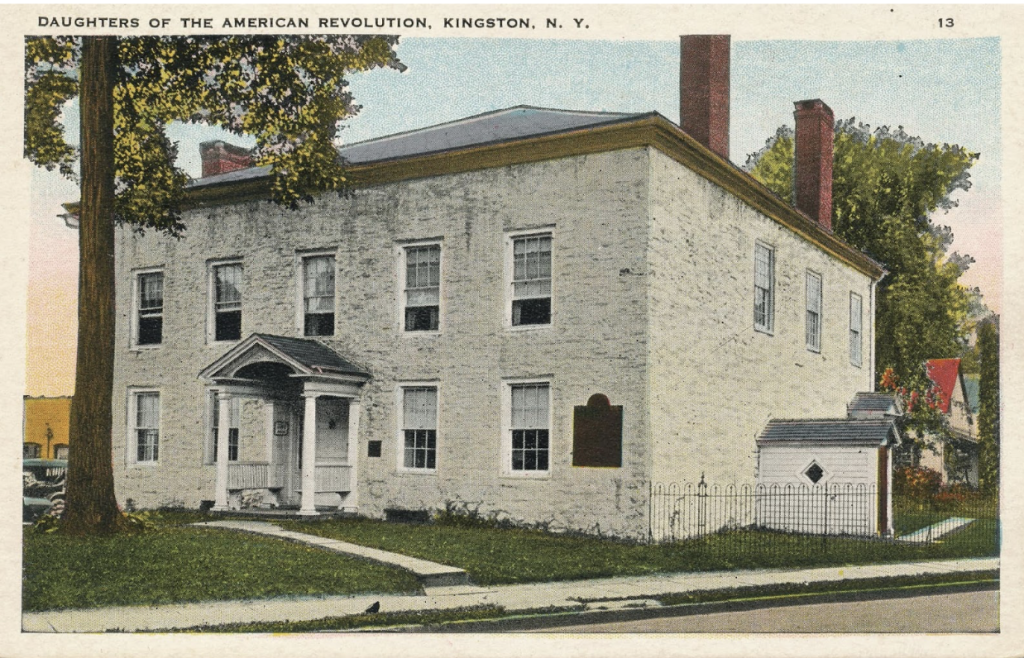
By Marissa Marvelli
After a summer of intense actions and counteractions, followed by a two-month lull, the appeal by the Daughters of the American Revolution Wiltwyck Chapter (DAR) will finally be reheard by the Kingston Zoning Board of Appeals (ZBA) on Thursday, November 13, at 6:00 p.m. This hearing has already been postponed twice at the DAR’s request, as their attorney was unavailable in September and October. The ZBA has stated that it will not delay the hearing any longer.
At this hearing, the ZBA will consider new testimony and review the full record of the April 2025 decision by the Historic Landmarks Preservation Commission (HLPC), which denied the DAR a Certificate of Appropriateness to replace all 32 historic windows with Marvin insert units. At the July ZBA meeting, when the board considered whether to rehear the appeal, Chair Anthony “Junior” Tampone acknowledged procedural flaws in its June 12 hearing, during which his board initially overturned the HLPC’s decision. The flaws included the rushed decision-making process, the withholding of important documents, the absence of key stakeholders, and the inadequate public notice.
This case has always been about more than windows. It is about respecting and upholding the well-founded decision of a trained and qualified commission. The HLPC carefully reviewed the DAR’s window replacement application over multiple meetings, developing thorough findings to support its two denials of a Certificate of Appropriateness in 2023 and 2025, as well as its subsequent denial of a hardship claim.
There are striking parallels between the Wiltwyck DAR’s actions and the recent destruction of the East Wing of the White House: a disregard for the embodied history of an important building, an ignorance of the past, and a blatant failure to follow proper procedures. If local laws are to retain their purpose, they must be vigorously defended in situations like this. Fairness, accountability, and public trust are the bedrock of democracy—principles that a patriotic organization like the DAR should honor.
CALL TO ACTION
- ATTEND the Nov. 13 meeting at City Hall. Bring a friend. The ZBA needs to see that the public is invested in getting this right.
- TESTIFY at the hearing about the importance of upholding our preservation law and honoring the hard work of Kingston’s volunteer boards and commissions.
- WRITE a letter emphasizing that our local laws must be upheld and that the ZBA should not overturn well-founded HLPC decisions.
- All written comments must be received by 2:00 p.m. on Monday November 10. Comments may be emailed to Amee Peterson at apeterson [at] kingston-ny.gov, hand-delivered or placed in the drop box outside of City Hall. Use the subject line: “ZBA Meeting Comment November 13, 2025 – DAR House Rehearing.
- WATCH & SHARE the community-funded short video about the importance of preservation and this historic house. It’s just 5 minutes.
BACKGROUND INFORMATION
- Top 10 Things to Know About the D.A.R. House Review, Google Doc with links
- Timeline of DAR House window replacement effort, Google Doc with links
- “Preserving Our History and the Laws That Protect It” KingstonCitizens.org, Aug. 20, 2025
- “Local Chapter of the Daughters of the American Revolution Battling Against Kingston’s Historic Preservation Law” KingstonCitizens.org, July 3, 2025
- “Kingston slaps stone house with stop-work order over window renovations” by Brian Hubert, Daily Freeman, July 25, 2025.













